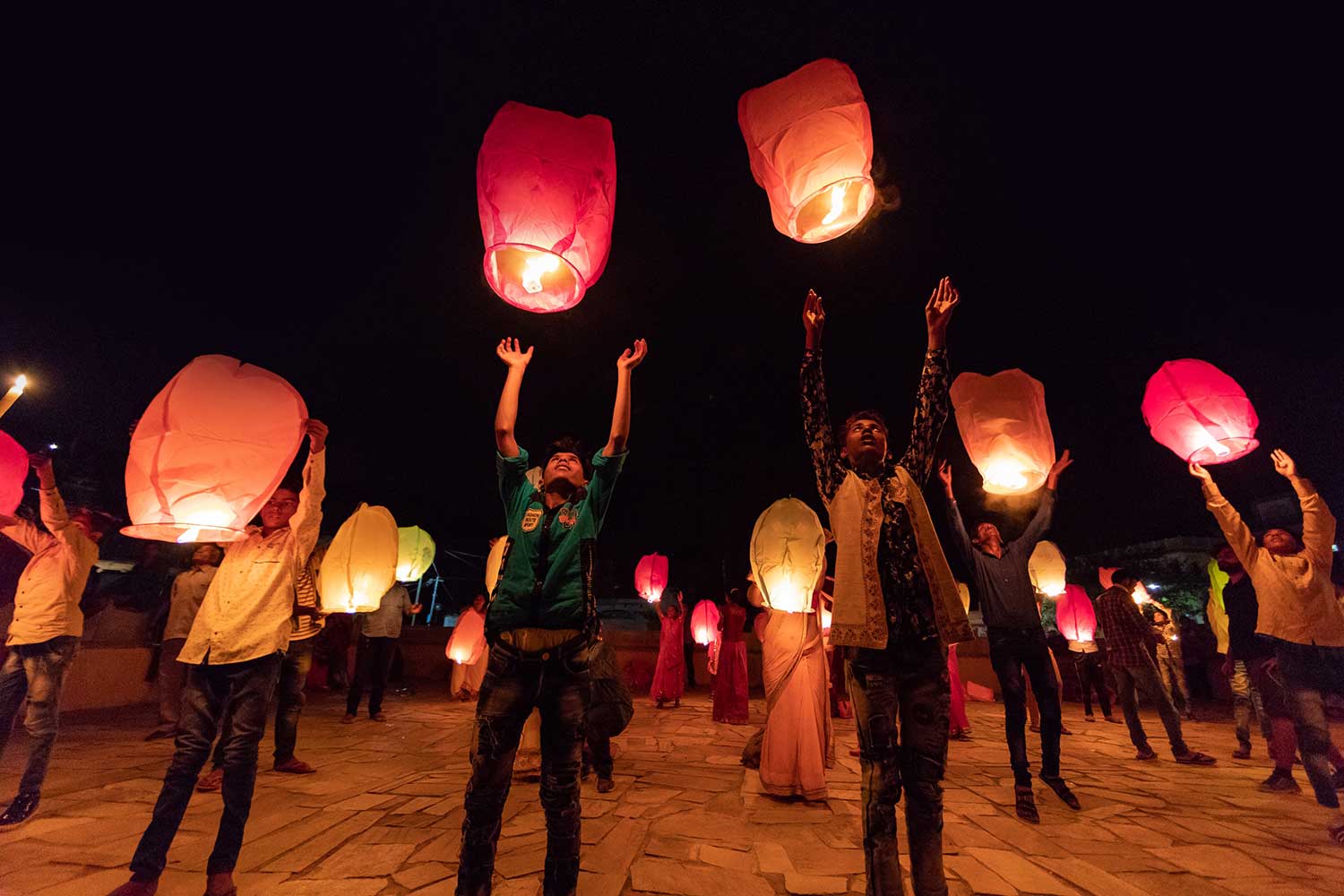Lantern Festival

About the Lantern Festival
The Lantern Festival, also called the Spring Lantern Festival, Shangyuan or Yuan Xiao Festival, is a Chinese festival that marks the final day of the traditional Chinese New Year celebrations. Now celebrated in many countries worldwide, this festival lights up the sky with lanterns and peoples lives with renewal and celebration. It is a time for families and friends to come together in peace, forgiveness and reconciliation.
The Lantern Festival falls on the first full moon night in the Chinese calendar, marking the return of spring. The highlight of the festival are the Lanterns. People decorate their homes with colorful lanterns, play lantern riddle games, and at the end of the night, send up flying lanterns.
Festival celebrations also include lion and dragon dances, parades, fireworks and traditional foods. Tangyuan (yuan xiao) are customary to eat at the festival. These small rice balls symbolize wholeness and unity within the family.
How the Chinese Celebrate the Lantern Festival
Lantern Festival traditions and activities vary regionally in China though they share many customs. Common customs include:
- Lantern lighting and flying is the main activity of the festival. Lanterns come in all shapes and sizes and vary from region to region. Decorative lanterns have become increasingly popular as are small handheld lanterns for children. The most popular lanterns are the ones made for lighting and releasing into the sky.
- Eating tangyuan is an all-important custom of the Lantern Festival. Tangyuan are small round dumplings made of rice flour and stuffed with different fillings, most commonly sweet. The round ball shape inside a bowl symbolizes wholeness and togetherness and is an expression of family unity.
- Lion and dragon dances feature a traditional aspect to the Lantern Festival. These traditional folk dances are performed to ward off evil and pray for good fortune and protection.
- Spending time with family and friends, playing lantern riddle games, eating good food, enjoying fun entertainment, staring up at the moon and lighting lanterns together is customary in all cultures that celebrate the Lantern Festival.
The Lantern Festival around the World
The lantern festival has already become a popular winter celebration in various countries across the globe. In New York City, London, San Francisco, Paris, and Berlin, the lantern festival is a culture-filled feast to display the artistry of lanterns.
History of the Lantern Festival
The Lantern Festival can be traced back to 2,000 years ago and there are different legends that tell the tale of the origin.
The Lantern Festival Han dynasty (206 BCE to 220 CE) legend tells of when Buddhist monks would light lanterns on the 15th day of the lunar year in honour of the Buddha. The rite was later adopted by the general population and spread throughout China and other parts of Asia. A legend concerning the festival’s origin tells the tale of the Jade Emperor (You Di), who became angered at a town for killing his goose. He planned to destroy the town with fire, but he was thwarted by a fairy who advised the people to light lanterns across the town on the appointed day of destruction. The emperor, fooled by all the light, assumed the town was already engulfed in flames. The town was spared, and in gratitude the people continued to commemorate the event annually by carrying colourful lanterns throughout the town.
January 15th on the lunar calendar was called “Yuan Xiao” during the Han Dynasty more than two thousand years ago. Ancient Chinese people used to call “January” as “Yuan” which means the origin of everything. And the “Xiao” stood for the night in Chinese culture. On New Year’s Eve and “Yuan Xiao”, scaring away evil spirits and getting rid of the unpleasant past were both vital to welcoming a new year.
The sharp screaming of firecrackers and the dazzling-to-blinding brightness of fireworks are expected to expel all the filth and bad fortunate, which were sacred rites for “Yuan Xiao”. Today, firecrackers and fireworks have evolved becoming the most indispensable and exciting ornaments scattered across the dark sky to lead people to leave old memories behind forever. “Dark” was not the only appropriate description for nights in old China. Wars, famines, plagues, and restricted, inhuman political oppression took away any hope to earn a better life for lower class people in the cities and poor peasants in the countryside. Illuminating the last night on the holidays of the new year, which was a simple pleasure for poor people to escape from the reality where there was nothing meaningful to enjoy aside from the first and last carnival in a year.
During the Tang Dynasty, countless lanterns hung on the walls, trees, and the vendor’s booths along the streets and young unmarried men and women leisurely strolled around under the lanterns with masks covering their pale, beautiful faces, searching for potential lovers. Now, “Yuan Xiao” has a new name: “The Lantern Festival”.




